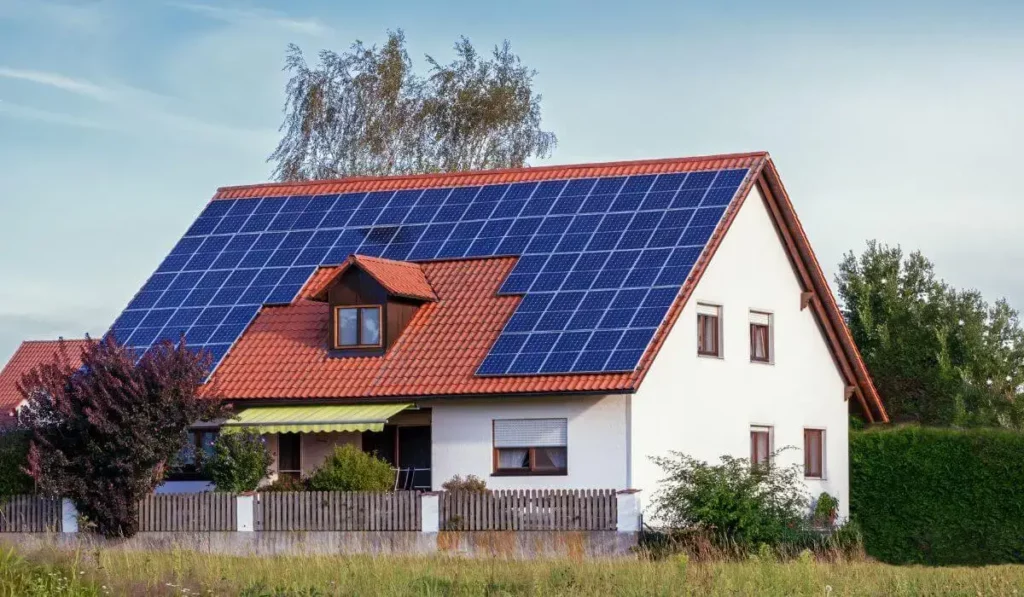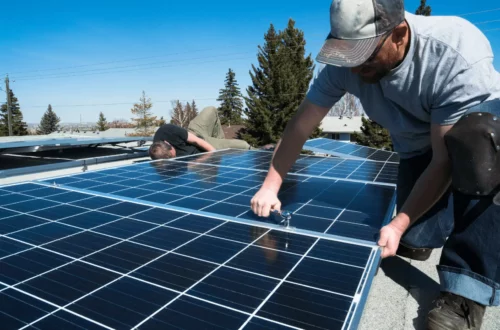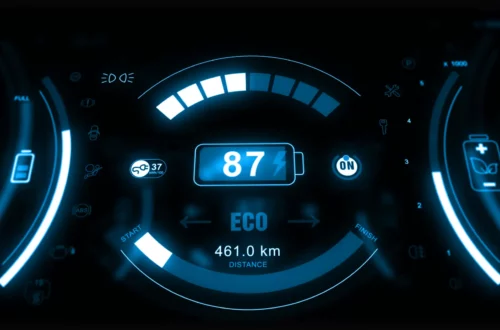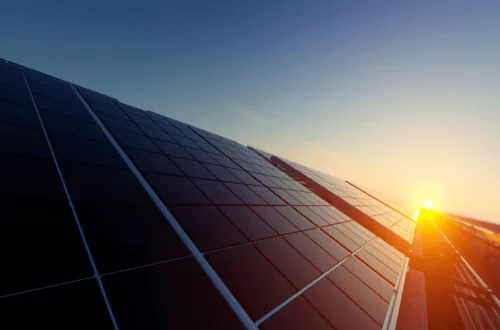The Complete Guide to Powering Your Home with Renewable Energy

In today’s world, where climate change is a pressing issue and energy costs are rising, transitioning to renewable energy sources for your home has never been more crucial. This comprehensive guide will provide you with valuable insights, tips, and recommendations on how to make the switch to renewable energy.
Throughout this article, we’ll explore a range of eco-friendly options such as residential solar power systems, wind turbines, and geothermal energy solutions. We’ll delve into the benefits of using renewable energy for your home, cost-effective ways to implement these systems and the government incentives and regulations you need to know about.
Join us as we empower you to create a sustainable future for your home and contribute to a greener planet.
Introduction to Renewable Energy
Renewable energy is a vital solution in our fight against climate change and reducing our dependence on fossil fuels. Unlike traditional energy sources that deplete over time, renewable energy is derived from natural sources that are constantly replenished, such as sunlight, wind, water, and heat from the Earth’s core. By harnessing these sustainable resources, we can power our homes without contributing to harmful greenhouse gas emissions.
The significance of renewable energy lies in its ability to mitigate climate change. As we transition away from fossil fuels, which release greenhouse gases when burned, we can significantly reduce our carbon footprint and slow down the pace of global warming.
Furthermore, renewable energy offers a range of other benefits for homeowners. By powering our homes with renewable sources, we can reduce our reliance on traditional energy grids, leading to potential cost savings in the long run. Moreover, it provides us with increased energy independence, as we become less reliant on fossil fuel imports.
As the demand for renewable energy increases, advancements in technologies like solar panels, wind turbines, and geothermal heat pumps have made it more accessible for homeowners. In the following sections, we will explore the different renewable energy options available for powering homes, their benefits, and the considerations to keep in mind when adopting them. Let’s delve into the world of sustainable power and discover how we can make a positive impact on the environment while enjoying the benefits of renewable energy.
Benefits of Powering Your Home with Renewable Energy
Transitioning to renewable energy sources for powering your home offers numerous advantages that go beyond environmental benefits. By harnessing the power of renewable energy, homeowners can enjoy significant cost savings, contribute to a cleaner and healthier planet, and achieve energy independence. Here are some key benefits of utilizing renewable energy sources for residential properties:
1. Cost Savings: Investing in renewable energy systems can lead to substantial savings on energy bills over time. Solar panels, wind turbines, and geothermal heat pumps can generate clean energy and reduce reliance on expensive fossil fuels. Additionally, some governments offer incentives such as tax credits or rebates to support the installation of renewable energy systems.
2. Environmental Benefits: Renewable energy sources produce minimal greenhouse gas emissions, helping to combat climate change and reduce air pollution. By powering your home with solar, wind, or geothermal energy, you significantly decrease your carbon footprint and contribute to a sustainable future for generations to come.
3. Energy Independence: Relying on renewable energy sources gives homeowners greater control over their energy supply. Unlike fossil fuels, which are subject to price fluctuations and geopolitical tensions, renewable energy is abundant and widely available. By generating your own clean energy, you become less dependent on external factors and more self-sufficient.
4. Resilience and Reliability: Renewable energy systems can enhance the resilience of your home during power outages or natural disasters. Battery storage systems paired with solar panels, for example, can provide a backup power supply, ensuring uninterrupted electricity when the grid goes down.
5. Long-Term Investment: Transitioning to renewable energy is not just a short-term solution; it is a long-term investment. Renewable energy systems have a lifespan of multiple decades, making them a durable and reliable source of power for your home. Furthermore, their maintenance requirements are generally lower compared to traditional energy systems.
By embracing the benefits of renewable energy, homeowners can contribute to a more sustainable and resilient future while enjoying long-term cost savings and energy independence.
Remember, when considering renewable energy options for your home, it’s important to assess your specific needs and consult with professionals in the field to determine the best solution for your property.
Solar Power for Home
Solar power is a renewable energy option that has gained significant popularity for powering homes. Solar panels are designed to harness the energy from the sun and convert it into electricity. By installing solar panels on your roof or in your backyard, you can generate clean and sustainable energy to power your home.
How Solar Panels Work
Solar panels consist of photovoltaic (PV) cells, which are made up of semiconductor materials such as silicon. These cells absorb sunlight and convert it into direct current (DC) electricity. An inverter then converts the DC electricity into alternating current (AC) electricity, which is used to power household appliances and lighting.
Installation Process
To install solar panels, you will need to assess the suitability of your roof or property for solar power. A professional solar installer can evaluate factors such as the orientation and tilt of your roof, shading from trees or neighboring buildings, and available space for panel placement.
Once the assessment is complete, the installer will secure the solar panels onto your roof or on a ground-mounted system. The panels are connected to an inverter and a meter that tracks the energy produced. In some cases, excess energy generated by your solar panels can be fed back into the grid, earning you credits or compensation from your utility company.
Benefits and Considerations
There are several benefits to using solar power for your home. First and foremost, solar energy is a clean and renewable resource, reducing carbon emissions and helping combat climate change. By powering your home with solar panels, you can also save money on your electricity bills in the long run.
However, it’s important to consider a few factors before investing in solar power. The initial cost of installing solar panels can be high, although there are government incentives and financing options available to help offset these costs. Additionally, the efficiency of solar panels may vary depending on factors such as location, climate, and the angle of your roof.
It’s recommended to consult with a solar energy professional who can evaluate your specific circumstances and provide tailored advice. With the right planning and installation, solar power can be a reliable and cost-effective solution for powering your home with renewable energy.
Wind Energy for Home
Wind energy is a popular and increasingly accessible renewable energy option for homeowners looking to power their homes sustainably. By harnessing the power of the wind, wind turbines can generate electricity without relying on fossil fuels. Here are some key points to consider when evaluating wind energy for your home:
Benefits of Wind Energy
– Clean and Renewable: Wind energy is a clean and renewable source of power, meaning it doesn’t produce harmful emissions or contribute to climate change.
– Cost Savings: Once a wind turbine is installed, it can significantly reduce your electricity bills, providing long-term cost savings.
– Energy Independence: By producing your own electricity, you become less reliant on traditional power grids and have greater control over your energy consumption.
– Carbon Footprint Reduction: Switching to wind energy helps decrease your carbon footprint, as it is a carbon-free source of electricity.
Installation Requirements
– Available Space: Wind turbines require adequate space, typically on open land or rooftops with minimal obstructions to ensure optimal wind flow.
– Local Regulations: Check with your local government regarding any restrictions or permits needed for wind turbine installations in residential areas.
– Wind Resources: Conduct a wind assessment to determine the wind speed and availability in your location. This will help determine the viability of wind energy for your home.
Potential Challenges
– Noise Concerns: Wind turbines can produce some level of noise, especially in close proximity to residential areas. Consider the distance between the turbine and neighboring properties.
– Visual Impact: Depending on the size and design of the turbine, there may be visual impact concerns. Take into account the aesthetic impact on your property and surrounding landscape.
While wind energy offers numerous benefits, it’s important to evaluate your specific circumstances and consult experts to determine if it’s a suitable option for your home. As a homeowner, transitioning to wind energy can be a rewarding step towards a greener and more sustainable future.
Also read: Renewable Energy vs Fossil Fuels: Which One is Better?
Geothermal Energy for Home
Geothermal heat pumps provide an innovative and sustainable solution for heating and cooling homes. This technology harnesses the Earth’s natural heat to provide a constant and reliable source of energy. Here’s a closer look at geothermal energy and its benefits for residential properties.
How Geothermal Heat Pumps Work
Geothermal heat pumps utilize the constant temperature of the Earth to regulate indoor temperatures efficiently. These systems consist of three main components: the heat pump unit, underground loops, and a distribution system. The heat pump utilizes the Earth’s heat to provide both heating and cooling by transferring heat between the inside of the home and the ground.
Energy Efficiency and Sustainability
One of the significant advantages of geothermal energy for homes is its high level of energy efficiency. Geothermal heat pumps can deliver up to four units of energy for every unit of electricity they consume. This results in substantial energy savings and reduced utility bills.
Moreover, geothermal systems eliminate the need for fossil fuel combustion, making them environmentally friendly. By using the Earth’s natural heat, geothermal energy produces zero greenhouse gas emissions and helps reduce the overall carbon footprint of residential properties.
Benefits for Homeowners
Apart from its energy efficiency and sustainability, geothermal energy offers several benefits to homeowners. These include:
1. Long-Term Cost Savings: While the upfront cost of installing a geothermal heat pump system may be higher than traditional HVAC systems, homeowners can enjoy significant long-term cost savings due to lower energy consumption.
2. Durability and Longevity: Geothermal heat pump systems have fewer moving parts compared to conventional heating and cooling systems, resulting in increased durability and reduced maintenance requirements.
3. Quiet and Clean Operation: Geothermal systems operate quietly and don’t require an outdoor condensing unit like traditional air conditioning systems, enhancing the comfort and aesthetics of homes.
4. Reliability and Consistency: Geothermal heat pumps provide consistent heating and cooling throughout the year, irrespective of weather conditions, ensuring optimal comfort for homeowners.
Government Incentives and Regulations
When it comes to transitioning to renewable energy sources for your home, there are several government incentives and regulations that can make the process even more attractive. By taking advantage of these programs, you can not only reduce your carbon footprint but also save money in the long run. Here are some key points to consider:
Government incentives:
– Federal tax credits: The federal government offers tax credits for installing renewable energy systems, such as solar panels and wind turbines. These credits can significantly offset the initial costs of implementation.
– State and local rebates: Many states and local governments provide financial incentives for residential renewable energy projects. These can include grants, rebates, or low-interest loans.
– Feed-in tariffs: In some areas, homeowners can receive payment for excess energy generated by their renewable energy systems, which is fed back into the grid.
Regulations:
– Net metering: Many states have implemented net metering policies, which allow homeowners with renewable energy systems to receive credits for the excess energy they produce. These credits can offset their electricity bills during periods of low energy production.
– Renewable portfolio standards (RPS): Some states have established RPS, which require utilities to obtain a certain percentage of their energy from renewable sources. This encourages the development of renewable energy and can create additional market opportunities for homeowners.
It’s important to research and understand the specific incentives and regulations in your area as they can vary. Consulting with a professional and local renewable energy organizations can help you navigate these opportunities and make the most of the available resources.
Remember, by taking advantage of these incentives and adhering to regulations, you can not only contribute to a cleaner environment but also enjoy the financial benefits of transitioning to renewable energy sources for your home.
Transitioning to Renewable Energy
If you’re considering transitioning to renewable energy sources to power your home, you’re not only making an environmentally conscious choice but also setting yourself up for potential long-term cost savings. Here are some practical tips and considerations to help you make a smooth transition:
1. Financial Planning
Before making any changes, evaluate your budget and consider the upfront costs associated with installing renewable energy systems. Research government incentives, tax credits, and financing options available to help offset initial expenses. Calculate the potential return on investment and long-term savings to determine the financial feasibility.
2. Seek Professional Advice
Consult with a reputable renewable energy professional who can assess your property, energy needs, and recommend the best renewable energy options that align with your goals. They can also guide you through the installation process, ensuring compliance with local regulations and maximizing energy production.
3. Evaluate Energy Efficiency
Improving energy efficiency before transitioning to renewable energy can enhance the effectiveness and affordability of your new system. Consider conducting an energy audit to identify areas where you can reduce energy consumption. Upgrade to energy-efficient appliances, LED lighting, and implement smart home technologies that optimize energy usage.
4. Choose the Right Renewable Energy Source
Explore different options such as solar power, wind energy, or geothermal heat pumps for heating and cooling. Consider factors like your location, available space, and climate conditions. Research the benefits, installation requirements, and maintenance considerations of each renewable energy source to find the most suitable option for your home.
5. Monitor and Evaluate
Once your renewable energy system is in place, regularly monitor its performance to ensure optimal efficiency. Track energy production and consumption to identify opportunities for improvements. Consider investing in energy monitoring devices that provide real-time data to help you make informed decisions about energy management.
By incorporating these practical tips and considerations into your transition to renewable energy, you can make a positive impact on the environment while potentially saving money in the long run. Embrace sustainability and join the growing community of homeowners who are powering their homes with clean, renewable energy sources.
Remember, every step towards renewable energy brings us closer to a greener and more sustainable future.
Eco-Friendly Practices for Home
When it comes to powering your home with renewable energy, there are several eco-friendly practices you can adopt to further reduce your carbon footprint. These practices work hand in hand with using renewable energy sources, creating a more sustainable and efficient home environment.
Energy-Efficient Appliances
Investing in energy-efficient appliances is a great way to save energy and reduce your electricity bills. Look for appliances with the Energy Star label, as they are designed to operate more efficiently and consume less power. Energy-efficient refrigerators, washing machines, and dishwashers can make a significant difference in your overall energy consumption.
Smart Home Technology
Embracing smart home technology can help you monitor and control your energy usage more effectively. Install smart thermostats that allow you to set temperature schedules and adjust settings remotely. Smart lighting systems, motion sensors, and programmable timers can also help optimize your energy usage.
Reduce Energy Consumption
Take simple steps to reduce your energy consumption on a daily basis. Turn off lights and unplug devices when they’re not in use. Opt for natural lighting during the day and use energy-efficient light bulbs. Insulate your home properly to minimize energy loss and maintain comfortable indoor temperatures.
These eco-friendly practices, combined with using renewable energy sources, can significantly reduce your environmental impact and contribute to a more sustainable future.
Remember, transitioning to renewable energy is just the first step. By adopting these eco-friendly practices, you can maximize your energy efficiency and create a truly environmentally friendly home.
Also read: Top Renewable Energy Sources for a Better Future
Conclusion
Switching to renewable energy sources for powering your home brings numerous benefits and contributes to a more sustainable future. By harnessing the power of renewable resources like solar, wind, and geothermal energy, you can significantly reduce your carbon footprint and make a positive impact on the environment.





